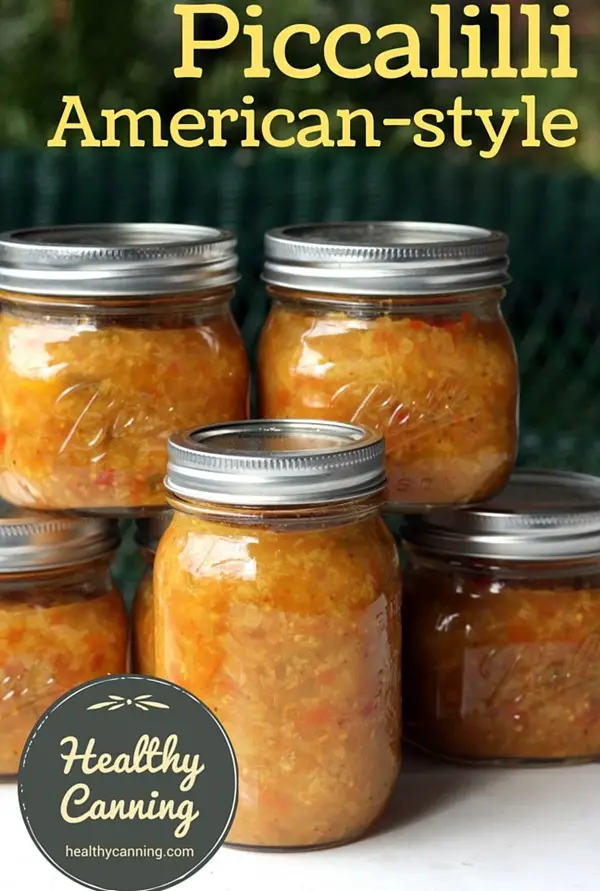Are you a sustainability enthusiast looking for a homemade condiment that’s both flavorful and eco-friendly? Look no further than American-style piccalilli! This relish of pickled spices and vegetables is a staple in Northeastern United States and is frequently used as a topping for hot dogs and hamburgers. Unlike the British piccalilli, American-style piccalilli has a sweeter taste and comes in green or red color, with bigger chunks of vegetables.
What is Piccalilli?
Piccalilli originated in South Asia and made its way to England, where it became a popular relish of pickled vegetables and spices. In America, regional recipes differ considerably. In the Northeastern United States, commercial piccalillis are made with a base of green tomatoes or sweet peppers, while in the Midwestern United States, gherkins are finely chopped to create a relish that’s sometimes referred to as “neon relish.” Although not commonly served in Southern US, this relish can include green beans, cabbage, bell peppers, onions, and other vegetables. Chow-chow is a term used for piccalilli in some regions.
Why Make Your Own Piccalilli?
While store-bought piccalilli can be delicious, making your own at home has several benefits. You can control the ingredients, ensuring that everything is organic and eco-friendly. Plus, making your own piccalilli is often more cost-effective, especially if you grow some of the vegetables yourself. By canning your own piccalilli, you’ll have a supply of this tasty condiment that can last for months, reducing the amount of plastic waste generated by buying store-bought condiments.
How to Make American-Style Piccalilli
If you’re interested in making your own American-style piccalilli, Healthy Canning has a recipe that’s easy to follow and perfect for beginners. This recipe is different from the English-style piccalilli, and can be easily tripled or doubled without causing extra work, especially since the food processor will do most of the heavy lifting for you.
Ingredients:
- 4 cups of finely chopped cucumbers
- 2 cups of finely chopped green bell peppers
- 2 cups of finely chopped red bell peppers
- 2 cups of finely chopped onions
- 1/4 cup of pickling salt
- 2 cups of cider vinegar
- 1 1/2 cups of white sugar
- 1 tablespoon of celery seeds
- 1 tablespoon of mustard seeds
- 1 tablespoon of ground turmeric
Instructions:
- In a large bowl, combine the chopped cucumbers, green and red bell peppers, and onions. Sprinkle with pickling salt and let it sit for at least 4 hours or overnight in the refrigerator.
- After the vegetables have brined, drain and rinse them thoroughly.
- In a large pot, mix the cider vinegar, white sugar, celery seeds, mustard seeds, and ground turmeric. Bring to a boil, stirring constantly, until the sugar dissolves.
- Add the brined vegetables to the pot and bring it to a boil again. Reduce the heat and let it simmer for about 10 minutes.
- Ladle the hot piccalilli into sterilized jars, leaving 1/2 inch of headspace. Wipe the rims of the jars clean, place the lids on top, and tighten the bands.
- Process the jars in a boiling water canner for 10 minutes. Allow the jars to cool before storing them in a cool, dry place.
Conclusion
Making your own American-style piccalilli is an excellent way to practice sustainability while enjoying a delicious condiment. With the Healthy Canning recipe, you can easily create a batch that can last for months, reducing the amount of plastic waste generated by buying store-bought condiments. So, why not give it a try and enjoy the satisfaction of knowing that you’re making a positive impact on the environment?


